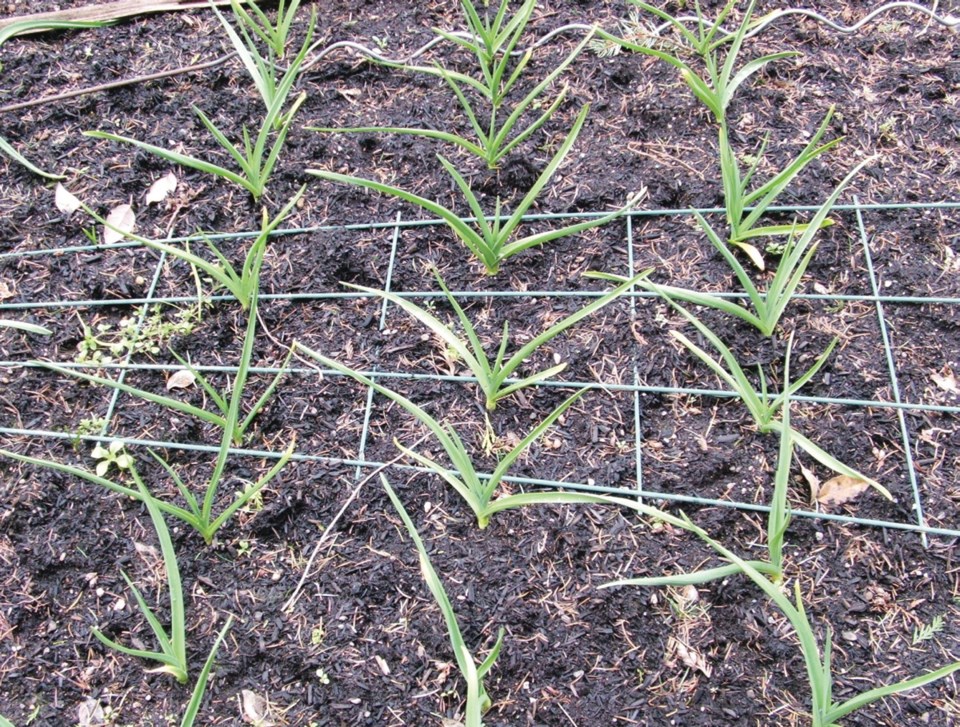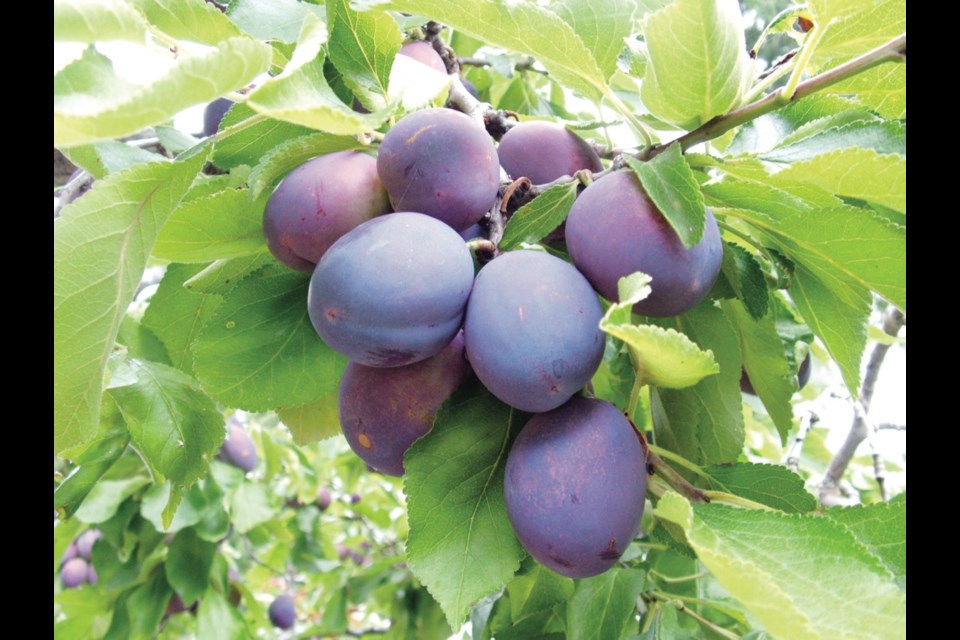Dear Helen: I’m not getting much fruit from my Stanley and Italian Prune plum trees. I watered and fertilized the trees carefully in the spring and reaped a reward of four plums. I was about to give up on the trees when a friend told me she had very little fruit from her trees this summer. What to do? The trees seem healthy.
M.A.
Both your European plums are at least partly self-fertile. I have only one, an Italian Prune plum that has produced prolifically over many years, with a few exceptions.
With fruit trees in general, a summer with a lean or non-existent harvest sometimes follows a heavy bearing year that depletes a tree’s resources. The overall health of the tree, the weather at flowering time, and the presence or absence of bees all figure into fruiting as well.
Early in the spring, when the plums are flowering, cold, wet weather can affect the quality of the pollen and its ability to move down into the flowers’ ovaries to properly “fertilize” the blooms for the formation of fruit.
Nasty weather also inhibits the bee activity that distributes pollen from bloom to bloom as the insects gather pollen and nectar from the flowers.
I’ve heard varying reports on fruit harvests in home gardens this year. Several gardeners have reported few plums, and my tree yielded an unusually sparse harvest.
You might consider, as the tree shows signs of budswell in late winter or early spring, fertilizing around and a bit beyond the “drip line” of the tree’s branches. If the tree has been generally healthy, with a normal amount of new growth each year, use a product that has a slight emphasis on the phosphorus and potassium content. These are represented by the second and third numbers on fertilizer labels. Both nutrients promote flowering and fruiting.
Try to keep the tree in a spreading rather than a straight-up growth pattern. Prune to relieve congestion for optimum penetration of sunlight and free flow or air through the tree.
Dear Helen: Do you know of a Canadian source for a tomato called Caspian Pink? The source I used in the past no longer lists it.
B.P.
Full Circle Seeds in Sooke lists Caspian Pink currently on its website (fullcircleseeds.com). They describe it as “Our favourite Brandywine type tomato.” It’s an heirloom from southern Russia with flattish fruits. The flavour is sweet and mild. The indeterminate (staking) plants are considered ideal for cool climates and are outstanding producers of pinkish red fruits weighing 1 to 1 1/2 pounds. They are “perfect for slicing.”
The Full Circle site allows for payment by Paypal or cheque.
Anyone seeking a Canadian source for a specific vegetable variety will find a superb resource in the Seeds of Diversity “Canadian Seed Catalogue Index.” Visit seeds.ca and follow the links.

Dear Helen: I read with interest your recent column on mulching. A few weeks ago I made a large planting of garlic cloves. Should I cover the planted site with leaves, or is it preferable to leave the soil exposed?
S.M.
A generous mulch layer of leaves over a planted garlic bed is a good idea. The cloves are very hardy. The leaves are not for protection from the cold, but rather for protecting the soil from erosion and excess leaching of nutrients.
By late winter, the leaves will have packed down in the rain. As garlic shoots appear, some of the leaves can be raked away and set aside for summer mulching around plants. Or, they can be added to a compost heap or dug under in spaces to be planted late in the spring.
Dear Helen: The compost in one of my enclosures is ready to use. should I spread it on an empty garden plot now?
M.Y.
Spreading compost on the garden now would result in much of its nutrient content being “ rinsed” away in late fall and winter rains. It is preferable to fluff the heap up a bit and cover it loosely with a tarp or a sheet of plastic to keep the material as dry as possible over the winter.
With the first warmth of spring, and a light mixing up of the materials to introduce fresh air, micro-organisms in the heap will become re-activated to further convert the contents into useable food for plants. That’s the time to use the compost in preparing plots for planting. Mixed into plots in the spring, compost helps to enliven the soil for the production of vibrant plant growth.



